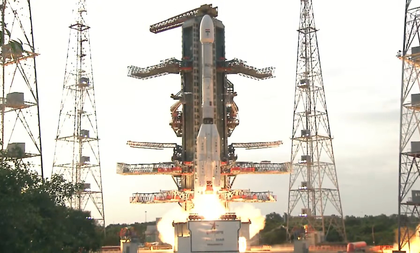Simplex Permanent Magnet Stepper Motors powered NISAR mission to space: Researchers
By IANS | Updated: August 1, 2025 09:29 IST2025-08-01T09:24:16+5:302025-08-01T09:29:40+5:30
Bengaluru, Aug 1 When the GSLV-F16 lifted off from the Satish Dhawan Space Centre in Sriharikota, researchers rejoiced ...

Simplex Permanent Magnet Stepper Motors powered NISAR mission to space: Researchers
Bengaluru, Aug 1 When the GSLV-F16 lifted off from the Satish Dhawan Space Centre in Sriharikota, researchers rejoiced as the Simplex Permanent Magnet Stepper Motors had successfully powered the first ISRO-NASA Earth Observation Mission.
The Simplex Permanent Magnet Stepper Motors, forming part of the NISAR mission rocket built at the SonaSPEED laboratory in Bengaluru, deploy technology developed by researchers at Sona College of Technology’s Sona Special Power Electronics and Electric Drives (SonaSPEED) division in Salem, the institute said in a statement on Friday.
The motor helps control the fuel-mixture ratio in the actuator assembly of the GSLV-F16, which mixes liquid hydrogen and oxygen to fire the cryogenic engine for the rocket’s final stage. Precise regulation of the liquid fuel and oxidiser mixture ensures reliable engine performance during the ascent phase.
This simple yet sophisticated Simplex Permanent Magnet Stepper Motor is mission-critical: during the high-stress launch sequence, its accurate position control is crucial for stable combustion and trajectory fidelity —factors essential for the successful deployment of the NISAR payload.
The NASA–ISRO Synthetic Aperture Radar (NISAR) mission signifies a new milestone in global climate and disaster monitoring, featuring all-weather, day-and-night imaging capabilities.
According to the institute, SonaSPEED motors have been used in earlier GSLV launch missions, including India’s moon mission, Chandrayaan-3. The SonaSPEED factory on the outskirts of Bengaluru manufactures crucial components for aerospace and outer space applications.
The institute has been ISRO’s trusted technology partner for nearly two decades, delivering space-grade electrical machines such as Permanent Magnet Stepper Motors, BLDC motors, and reaction wheels for previous missions — including Chandrayaan-2, Chandrayaan-3, and the RLV landing test.
It may be recalled that the Simplex Permanent Magnet Stepper Motors featured prominently in the LVM3 actuator assembly for the Chandrayaan-3 mission, which achieved India’s historic first lunar south pole landing in August 2023.
Disclaimer: This post has been auto-published from an agency feed without any modifications to the text and has not been reviewed by an editor
Open in app